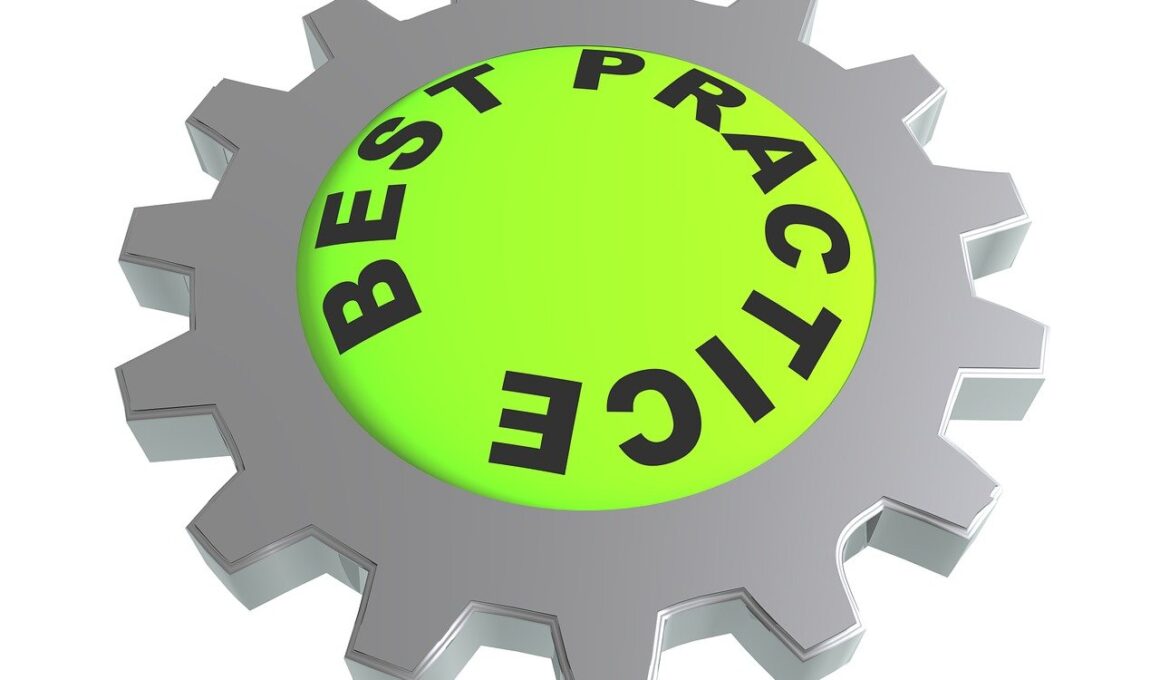Product Testing Best Practices for New Product Launches
Product testing plays a critical role in ensuring the success of new product launches. This phase allows businesses to gather valuable consumer feedback, which can be instrumental for adjustments before the official market introduction. For effective testing, it is essential to define clear objectives to understand what insights you wish to gain from consumers. Carefully selecting a target audience is equally important; include diverse demographics to mirror your actual market effectively. Comprehensive testing can unveil unexpected challenges, offering a chance to refine the product. Metrics such as customer satisfaction ratings and feature evaluations should also be established. Moreover, employing various testing methods like focus groups and surveys can enrich the testing process. Focus groups allow in-depth discussions, while surveys can help quantify opinions widely. As such, constructive criticism becomes a valuable treasure. Communicating openly and encouraging honest feedback will reveal organic consumer opinions about product features. Utilizing this combined data ensures a high probability of successful product introduction that resonates with the target audience.
Once you establish your product testing framework, it is essential to implement robust methodologies for gathering insights. Utilizing A/B testing can help determine which features or versions of your product resonate more with consumers. This helps isolate consumer preferences more clearly. Additionally, ensure to keep the testing environment neutral and organized to elicit uninhibited responses from participants. Encourage open dialogue, ensuring participants feel comfortable sharing their honest opinions about the product. Financial resources are typically allocated for product adjustments after testing; hence optimizing this process is cost-efficient. Also, consider leveraging technology. Digital testing platforms can streamline feedback collection, making it easier to analyze large volumes of data. Furthermore, investing in virtual reality (VR) simulations could offer innovative ways to test user experiences without substantial cost. Keeping participants informed about follow-ups on their feedback can foster trust and increase participation rates in future studies. Ultimately, remember that goals may evolve, and flexibility in strategy will allow for more dynamic product testing approaches that meet emerging market trends.
Assessing Consumer Feedback
Evaluating consumer feedback is a vital step in the product testing journey. This process involves aggregating both qualitative and quantitative data collected during testing. Quantitative data can be measured using specific metrics like Net Promoter Scores (NPS) or satisfaction ratings, providing a numerical overview of how the product performs. Conversely, qualitative feedback through participant comments reveals deeper emotional responses and insights that numerical data might overlook. Organizing gathered data into categories will enhance focus areas for improvement. Prioritize which feedback needs immediate attention and which can be addressed during later phases of product development. Visual tools, such as heatmaps or graphs, can be effective in illustrating trends within the data. Ensuring an inclusive perspective is crucial for capturing diverse audience responses; hence, categorization helps achieve a holistic understanding of consumer sentiments. Synthesis meetings should involve cross-functional teams to encourage varied viewpoints, leading to well-rounded decision-making. Also, remember that feedback should be actionable to foster real improvements that resonate with the target audience and align with business goals.
Creating a timeline for product testing is just as important as gathering and analyzing feedback. This schedule should outline each phase of the testing process, including milestones for data collection, analysis, and product adjustments. Time management plays a crucial role, particularly in aligning product launch dates with market conditions and consumer expectations. Incorporating buffer periods throughout this timeline allows for unforeseen setbacks during testing. To maximize efficiency, regular check-ins among team members are necessary to ensure goals stay aligned. Assign specific responsibilities; this reduces bottlenecks in the process. Maintaining agile practices allows rapid adjustments based on initial feedback, all while ensuring that the final product consistently meets market needs. A well-organized testing phase can facilitate a smooth roll-out to market. Think of this phase as a rehearsal for launch day, helping everyone involved understand their roles and the ultimate goal. Furthermore, keen attention to time allows analysts to pivot when consumer trends shift, ensuring the product remains relevant upon release. Regularly revisiting timelines can also enhance strategy effectiveness to contain unexpected delays.
Post-Testing Adjustments and Revisions
Once product testing concludes, it’s time for rigorous adjustments based on the insights gathered. Implement necessary revisions to enhance product performance before hitting the market. Address critical feedback elements first, focusing on the features most influential in consumer satisfaction. Reviewing strengths and weaknesses based on evaluative data will help prioritize what changes to make. Collaboration between various departments, such as marketing and engineering, is crucial in refining the product. Open communication channels among team members facilitate effective adaptation processes. This may involve redesigning certain product aspects or improving usability and functionality. Don’t shy away from conducting additional small-scale tests after adjustments to assess their effectiveness. A continuous improvement cycle can reinforce product evolution, positively impacting user experience. You may also want to consider adjusting your approach based on emerging technology or trends identified during testing. These shifts could offer opportunities for value addition that competitors might miss. Ultimately, ensuring the product aligns with consumer expectations is essential. This adaptability can lead to a stronger, more appealing product that captures a larger market share.
Following the adjustments and revisions, a solid marketing strategy becomes paramount for the successful product launch. Using insights from earlier testing phases can help create targeted marketing campaigns that resonate with your audience. Formulate clear messaging that conveys product benefits and unique features; consider emphasizing testimonials from initial testers. Utilizing influential social media platforms can widen your reach significantly, allowing you to capture more consumer attention. Engaging content, such as videos or blogs featuring the product in use, can further showcase its advantages. Collaborations with influencers and thought leaders can lend authenticity to your marketing efforts. Also, don’t forget to leverage email marketing strategies to reach existing customers directly; provide updates and sneak peeks regarding the new product. Using countdowns and exclusivity can incite excitement. Tracking campaign performance via KPIs should also remain a priority to assess effectiveness. Ultimately, a well-crafted marketing strategy, when combined with successful testing elements, leads a new product launch toward improved visibility and success in the competitive market landscape.
Continuous Improvement Beyond Launch
The journey of product testing doesn’t end with the launch; it’s essential to continue assessing product performance post-launch. Monitor consumer feedback actively and remain adaptable to any issues that arise after the product’s introduction. Facilitate various channels for ongoing customer feedback, ensuring consumers feel heard and valued. This could include customer satisfaction surveys sent post-purchase or active engagement through social media platforms. Gathering and analyzing this data can uncover unforeseen modifications or improvements needed for future iterations. While initial testing plays a crucial role, stay open to evolving market demands and preferences. Regular product reviews can keep your offerings relevant and may spark innovative ideas for future development. Also, leverage the data gathered from post-launch analysis to refine your testing strategies for subsequent products. Foster a culture of continuous improvement within your team to ensure future releases benefit from learned experiences. Employing agile methodologies allows teams to adapt quickly and efficiently to updates and customer-driven changes. Ultimately, this focus on quality and responsiveness assists in maintaining a strong and credible brand reputation.
To encapsulate the critical importance of product testing in new product launches, successful execution hinges on collaboration, proper planning, and consumer feedback. Understanding how to integrate thorough testing methodologies ensures that your product resonates with its target audience effectively. Emphasizing the significance of adapting strategies based on consumer insights creates stronger competitive advantages. From pre-launch to post-launch, each stage carries weight in enhancing the product development process. Incorporating innovative technologies streamlines testing and helps gather deeper analysis, making substantial workflow improvements possible. Subsequently, a comprehensive marketing strategy reinforces this development, widening the reach and impact during launch. As new trends emerge, staying proactive and vigilant about consumer needs solidifies future product testing frameworks. Establishing a culture of continuous feedback empowers businesses to refine their offerings continually, leading to sustainable long-term success. The aim is not solely a successful introduction but to establish an enduring connection with consumers, ensuring their ongoing engagement and satisfaction. Remember, each lesson learned during the product testing phase serves as a foundation for future innovations and consumer-centric design.


